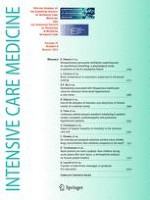01-08-2011 | Original
Transfer of take-home messages in graduate ICU education
Published in: Intensive Care Medicine | Issue 8/2011
Login to get accessAbstract
Purpose
Teaching by lecture (lecture format) is widely used at congresses and in medical educational programmes. The process involves the transfer of take-home messages. The aim of this study was to assess the number of take-home messages identified by postgraduate critical care junior doctors (juniors) during lectures.
Methods
This was a prospective observational study of 13 lectures. Lecturers were not informed in advance of the study. At the end of the lecture (30 or 50 min), the lecturer (senior doctor) and juniors listed the three main take-home messages on a form. Subjective elements of the juniors’ appraisal (quality of the presentation, explanation of the topic’s relevance, enthusiasm of the lecturer, background, case-based, delivery and personality, comprehensibility, practical applicability of information given, prioritization, presence of raw data, references, overall satisfaction) and objective elements (length of lecture, number of take-home messages written on the slides) of the lectures were recorded. Successful knowledge transfer was assessed by matching lecturers’ and juniors’ take-home messages.
Results
In total, 367 forms completed by 367 juniors were analysed. A match equal to 3 (highest match), 2, 1 or 0 was observed in 3.8, 26.7, 48.2 and 21.2% of the forms, respectively. No single subjective or objective element of the lecture was associated with the number of identified take-home messages.
Conclusions
Two-thirds of critical care junior doctors identified at best only one of the three main take-home messages of a lecture, suggesting that knowledge transfer is poor during passive format learning. These results suggest that there is a need to develop strategies to improve the performance of lecture-based learning.





